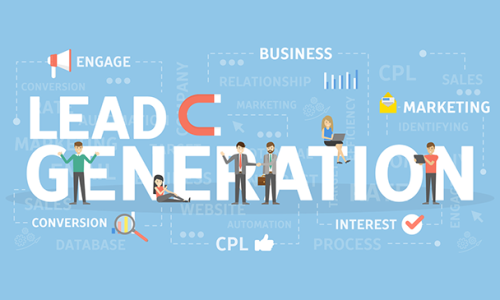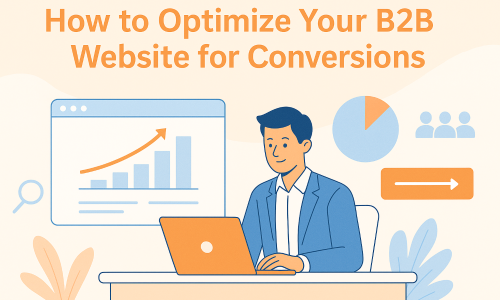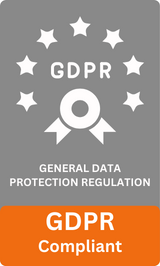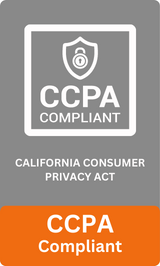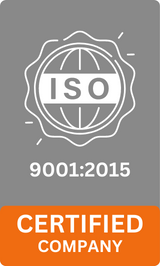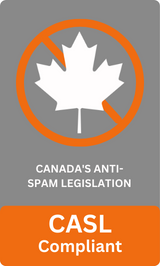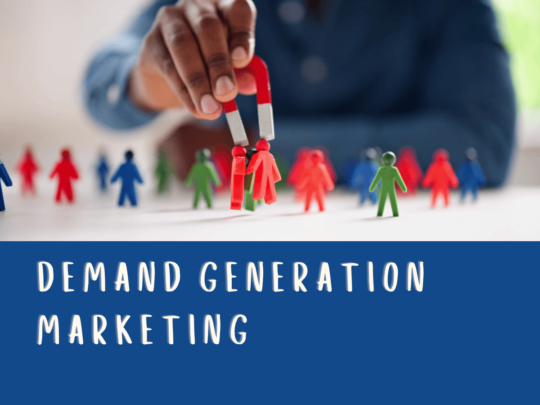
“The aim of marketing is to know and understand the customer so well the product or service fits him and sells itself.”
– Peter Drucker
Understanding and successfully applying Demand Gen Marketing might be the key to driving growth and creating long-term success in the highly competitive world of B2B marketing. According to demand gen-stats by Marketing Donut, slightly more than 60% of customers who contact you for information will not buy anything for at least three months.
This data emphasizes how crucial it is to develop an effective demand generation plan that supports prospective clients across their buyer’s journey and eventually boosts revenue and conversion rates.
1# What is Demand Generation?
Demand generation is a strategic approach aimed at creating awareness and interest in a company’s products or services. It includes a range of marketing strategies intended to draw in new clients and advance them through the sales funnel. Demand generation is about educating and engaging prospects to develop trust and interest, as opposed to lead generation, which concentrates on gathering contact information.
The primary objectives of demand generation include
- Building Brand Awareness: Ensuring your target audience knows about your brand and what it offers.
- Generating Interest: Creating compelling content and campaigns that pique the interest of potential customers.
- Driving Engagement: Encouraging prospects to interact with your brand through various touchpoints.
- Nurturing Leads: Providing valuable information and resources to guide prospects through their buyer’s journey.
- Converting Prospects: Turning engaged prospects into paying customers through targeted efforts.

Demand Generation
The Role of Demand Generation in the Sales Funnel
Demand generation plays a crucial role at the top and middle of the sales funnel:
- Top of the Funnel (TOFU): Focuses on creating awareness and attracting new prospects through content marketing, social media, SEO, and paid advertising.
- Middle of the Funnel (MOFU): Engages and nurtures leads with more in-depth content, such as whitepapers, webinars, and case studies, to build trust and move them closer to a purchase decision.
2# What is Demand Gen Marketing in B2B and Why It’s Important?
Demand Gen Marketing in B2B focuses on creating and nurturing interest in a company’s offerings among other businesses. It involves a combination of inbound and outbound marketing strategies tailored to the unique needs and preferences of B2B audiences. This approach aims to attract high-quality leads, engage them through personalized content, and convert them into long-term customers.
Importance of Demand Gen Marketing for B2B Businesses
Demand Gen Marketing is essential for B2B businesses for several reasons:
- Building a Strong Pipeline: This ensures a steady flow of qualified leads, which is critical for consistent sales and revenue growth.
- Aligning Marketing and Sales: Demand-gen marketing ensures that sales and marketing are working toward the same objectives by efficiently nurturing leads.
- Enhancing Brand Authority: Providing valuable and informative content positions your brand as a thought leader in the industry, building trust and credibility among prospects.
- Improving Customer Retention: Demand-gen marketing cultivates enduring relationships and client loyalty by involving them at every stage of their journey.
How Demand Gen Marketing Drives B2B Growth
Demand Gen Marketing drives B2B growth by:
- Attracting High-Quality Leads: Through targeted content and campaigns, it draws in prospects who are more likely to convert.
- Reducing the Sales Cycle: Educated and engaged leads move through the sales funnel more quickly, shortening the time to close deals.
- Increasing Conversion Rates: It raises the probability of conversions by providing tailored content to nurture leads.
- Enhancing Customer Retention: Engaged and satisfied customers are more likely to stay loyal to the brand, leading to repeat business and referrals.
- Boosting Overall Revenue: A steady flow of high-quality leads and increased conversion rates directly contribute to higher sales and revenue.
3# Demand Generation vs. Lead Generation
Definition of Lead Generation
Lead generation focuses on capturing interest or inquiry into products or services through targeted marketing efforts. It aims to collect information from potential customers, such as their name, email, and company details, to convert them into leads. This process often involves gated content, landing pages, and forms to gather contact information.
Key Differences Between Demand Generation and Lead Generation
- Scope: Demand generation is broader and includes creating awareness and interest, while lead generation is a subset focused on capturing leads.
- Approach: Demand generation involves both inbound and outbound tactics, whereas lead generation is primarily concerned with capturing leads through targeted campaigns.
- Outcome: Demand generation aims to build long-term relationships, while lead generation focuses on immediate lead capture and conversion.
When to Use Demand Generation vs. Lead Generation
- Demand Generation: Use demand generation to build brand awareness, engage potential customers early in their journey, and nurture them through the funnel. It’s ideal for creating a strong foundation of interest and trust.
- Lead Generation: Use lead generation to capture and convert interest from prospects who are ready to take action. It’s best for targeting prospects who have shown intent and are closer to making a purchase decision.
4# What Does a Demand-Gen Marketer Do?
A demand-gen marketer is responsible for developing and implementing strategies to generate interest and demand for a company’s products or services. Their key responsibilities include:
- Developing Demand Gen Strategies: Creating comprehensive plans that outline the tactics and channels to be used for demand generation.
- Campaign Management: Designing, executing, and managing marketing campaigns across various channels, including email, social media, content marketing, and paid advertising.
- Content Creation: Producing valuable and relevant content that educates and engages prospects, such as blog posts, whitepapers, eBooks, webinars, and videos.
- Data Analysis: Analyzing campaign performance and using data-driven insights to optimize and improve marketing efforts.
- Collaboration with Sales Teams: Working closely with sales teams to ensure alignment and smooth handoff of leads for conversion.
- Marketing Automation: Utilizing marketing automation tools to streamline and scale demand generation efforts.
Essential Skills for Demand-Gen Marketers
To be effective, demand-gen marketers need a diverse skill set, including:
- Strategic Thinking: Ability to develop and execute comprehensive demand generation strategies.
- Data Analysis and Interpretation: Proficiency in analyzing data and metrics to measure campaign performance and make data-driven decisions.
- Content Creation and Management: Strong writing and content creation skills to produce engaging and valuable content.
- Marketing Automation: Knowledge of marketing automation tools and platforms to streamline campaigns.
- Collaboration and Communication: Effective communication and teamwork skills to work closely with sales teams and other stakeholders.
5# Demand Gen Marketing Techniques for B2B
Effective demand-gen marketing requires a combination of techniques tailored to the B2B landscape:
- Content Marketing Strategies for Demand Gen: Create valuable and relevant content, such as blog posts, whitepapers, case studies, and webinars, to attract and engage your target audience. Ensure the content addresses their pain points and provides solutions.
- Account-Based Marketing (ABM) for B2B Demand Gen: Tailor marketing efforts to specific high-value accounts by creating personalized campaigns and content. ABM focuses on building strong relationships with key accounts to drive conversions.
- Inbound Marketing Techniques: Use SEO, content marketing, and social media to attract potential customers to your website and engage them with valuable content. Inbound marketing focuses on pulling prospects in rather than pushing messages out.
- Using Intent Data for Targeted Campaigns: Leverage intent data to understand buyer intent and target marketing efforts effectively. Intent data helps identify prospects who are actively researching and showing interest in your products or services.
- Leveraging Social Media for Demand Gen: Use social media platforms to engage with your audience, share valuable content, and build brand awareness. Social media can also be used for targeted advertising and lead generation.
- SEO and SEM Strategies for Demand Gen: Optimize your website and content for search engines to attract organic traffic. Use search engine marketing (SEM) to run paid campaigns and drive targeted traffic to your site.
6# Measuring and Analyzing Demand Gen Marketing Success
Key Metrics for Demand Gen Marketing
To measure the success of your demand gen marketing efforts, track the following key metrics:
- Website Traffic: Monitor the number of visitors to your website and the sources of traffic.
- Conversion Rates: Measure the percentage of visitors who take a desired action, such as filling out a form or downloading a resource.
- Lead Quality: Assess the quality of leads generated based on factors such as fit, engagement, and readiness to purchase.
- Customer Acquisition Cost (CAC): Calculate the total cost of acquiring a new customer, including marketing and sales expenses.
- Return on Investment (ROI): Measure the overall return on your marketing investment by comparing the revenue generated to the costs incurred.
Tools and Platforms for Measuring Demand Gen Effectiveness
- Google Analytics: Track website traffic, user behavior, and conversions.
- Marketing Automation Platforms: Use tools like HubSpot, Marketo, and Pardot to manage and analyze campaigns.
- Customer Relationship Management (CRM) Systems: Use platforms like Salesforce to track leads and measure campaign effectiveness.
- Business Intelligence Tools: Leverage tools like Tableau and Power BI for advanced data analysis and visualization.
How to Optimize and Improve Demand Gen Campaigns
- Continuously Analyze Performance Data: Regularly review your campaign metrics to identify areas for improvement.
- A/B Test Marketing Strategies and Tactics: Experiment with different approaches to determine what works best for your audience.
- Refine Targeting and Messaging: Use data insights to improve the accuracy of your targeting and the relevance of your messaging.
- Stay Updated with Industry Trends and Best Practices: Keep abreast of the latest developments in demand-gen marketing to stay competitive.
7# Future Trends in Demand Gen Marketing
Emerging Trends and Technologies in Demand Gen
- Artificial Intelligence and Machine Learning: Use AI and ML to analyze data, predict customer behavior, and automate marketing tasks.
- Personalization and Hyper-Targeting: Deliver personalized content and experiences based on individual preferences and behaviors.
- Advanced Data Analytics: Leverage big data and advanced analytics to gain deeper insights into customer behavior and campaign performance.
- Voice Search and Conversational Marketing: Optimize for voice search and use chatbots to engage with prospects in real time.
The Future of Demand Gen Marketing in B2B
- Greater Emphasis on Customer Experience: Focus on delivering exceptional customer experiences at every touchpoint.
- Integration of Emerging Technologies: Adopt new technologies to enhance demand gen efforts and stay ahead of the competition.
- Enhanced Collaboration Between Marketing and Sales Teams: Foster closer alignment and collaboration to improve lead nurturing and conversion.
How to Stay Ahead in the Evolving Demand Gen Landscape
- Stay Informed About Industry Trends: Regularly read industry publications, attend conferences, and participate in webinars.
- Invest in Continuous Learning and Development: Keep your skills up to date through training and professional development.
- Experiment with New Marketing Strategies and Technologies: Be willing to try new approaches and technologies to stay competitive.
8# A few Things to Keep in Mind
- Personalization is Key: Tailor your marketing messages and content to address the specific needs and pain points of your target audience.
- Data-Driven Decision Making: Use data and analytics to measure campaign performance and make informed decisions.
- Continuous Improvement: Regularly analyze and optimize your campaigns to improve results and stay ahead of the competition.
- Collaboration with Sales: Ensure alignment between marketing and sales teams to effectively nurture and convert leads.
Conclusion
Understanding Demand Gen Marketing is essential for accelerating growth and succeeding in the cutthroat B2B market of today. Building solid pipelines, improving client connections, and increasing revenue are all possible for B2B organizations by comprehending the significance of this, putting it into practice, and keeping up with evolving trends. Accept the potential of demand generation marketing to revolutionize your B2B campaigns and guarantee long-term success.
I hope you find the above content helpful. For more such informative content please visit SalesDemand.


